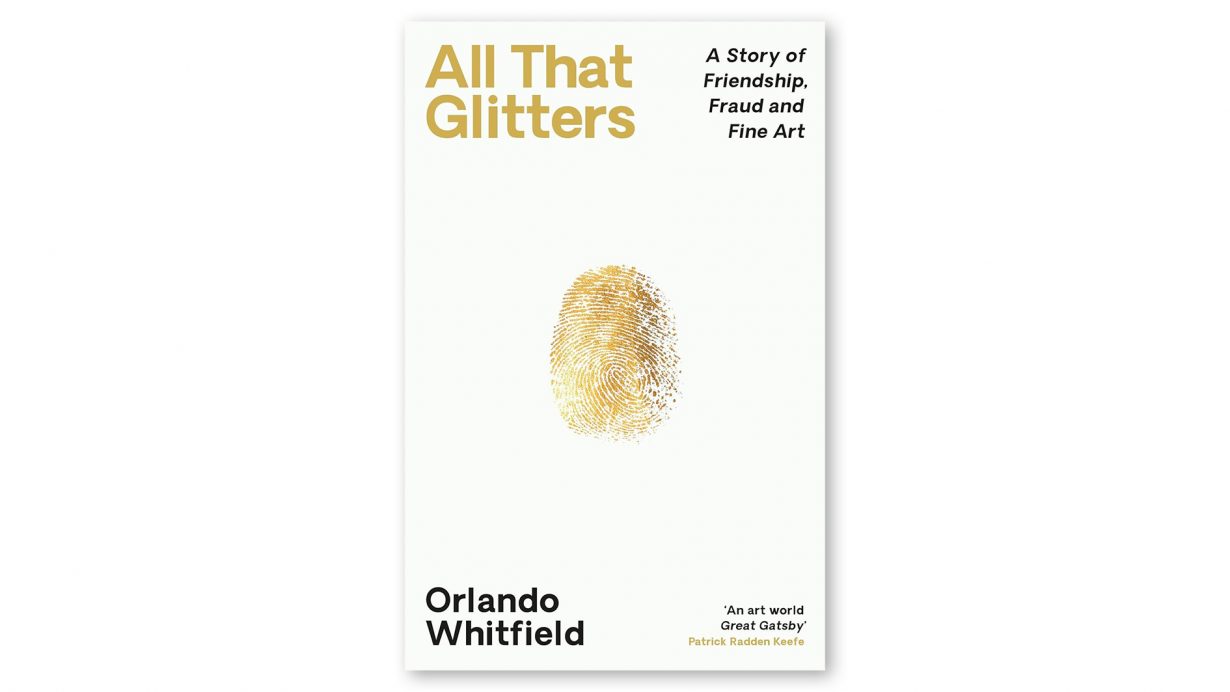In All That Glitters, Orlando Whitfield tries to understand how his close friend became a fine-art fraudster

Orlando Whitfield met Inigo Philbrick when they were both studying art history at Goldsmiths, part of the University of London. They quickly formed a close friendship, staying up late talking about art and ideas. But Philbrick had big designs, bigger than getting a BA – he didn’t want to just study art, he wanted to sell it. While at Goldsmiths, Philbrick was working part-time at White Cube gallery, and he and Whitfield formed a youthful partnership dealing independently in secondary-market artworks. After they finished their degrees, Philbrick went on to set up a gallery, Modern Collections, with White Cube owner Jay Jopling. Whitfield worked for his friend for a while, then moved on to start his own gallery.
Whitfield and Philbrick’s first sale as students was a Paula Rego drawing. When Philbrick began dealing as Modern Collections, he sold very different kinds of works, primarily large easel paintings by white male painters – Wade Guyton, Rudolf Stingel, Christopher Wool. Whitfield’s gallery, Hunter / Whitfield, opened with his friend Ben Hunter, represented emerging artists – painter Christopher Page, just a few years out of an MFA at Yale, whose paintings, studio and ideas Whitfield describes in attentive detail; they staged Rebecca Ackroyd’s first show; showed an installation by American artist Adam Gordon, which blocked most of the gallery space with a glass partition.
That Goldsmiths education remains: Whitfield describes the art beautifully and complexly (and sometimes casually, referring to a Stingel as a ‘stunner’, which is quite a nice way to describe a few million dollars’ worth of canvas shifting on the secondary market). But he discusses the artworld with remove and mistrust – the art fairs, the dinners, the yacht in Venice owned by arms dealers, the way Inigo can sell 220 percent of a painting, ‘which is, of course, 120 per cent more painting than existed’, Whitfield writes.
Inigo is charming. Inigo ‘is a brilliant raconteur’. Inigo eats at fancy restaurants that he refers to as ‘canteens’. Inigo and Orlando still go bowling once in a while, which feeds Orlando’s desire to sustain something of the spontaneous, heady (and perhaps naive) early days of their friendship. Inigo has a ‘loose standard of truthfulness’. Inigo sells the same pictures over and over to multiple people, pocketing the commission and at least once sending blank canvases to collectors’ storage spaces, assuming they won’t open the crates (they don’t). By the time he is caught, having attempted to escape his debtors to the Pacific island of Vanuatu, Philbrick had embezzled an estimated $86 million.
Whitfield earnestly and honestly describes the two men’s lives. As was the case with the artworks they each dealt in, their trajectories split. Whitfield had a nervous breakdown and left his gallery (he went on to work with a conservator, Pierce Townshend, who he describes in loving detail in one of the book’s highlight chapters). Philbrick moved to Miami, opened another gallery, made millions. It sounds like one of them was on an upwards course and the other headed the opposite way, but that’s not how things ended up.
Throughout the book, Philbrick and Whitfield sustain an increasingly erratic relationship. Whitfield writes about their interactions, from meetings at the Plaza to phone calls from Vanuatu, with great tenderness. At its core, All That Glitters is a story about friendship. The numbers and details of Philbrick’s infractions may be based on emails and business documents Philbrick shared with Whitfield (there was a moment Philbrick thought his old pal would write an article that told his side of the affair, so he provided him with evidence), but this is Whitfield’s story, not Philbrick’s. It’s a story about art, the art market and disillusionment. Our relationships – to other people, to objects and, in this specific case, to money – can make and break us. The sentiment Whitfield affords his shared past with Philbrick never fully dies out, but it is Philbrick’s demise that makes Whitfield see their friendship for what it was: ‘I thought I’d known him better than anyone else. It slowly became apparent that I knew him just as little as everyone.’
All That Glitters: A Story of Friendship, Fraud and Fine Art by Orlando Whitfield. Profile, £20 (hardcover)